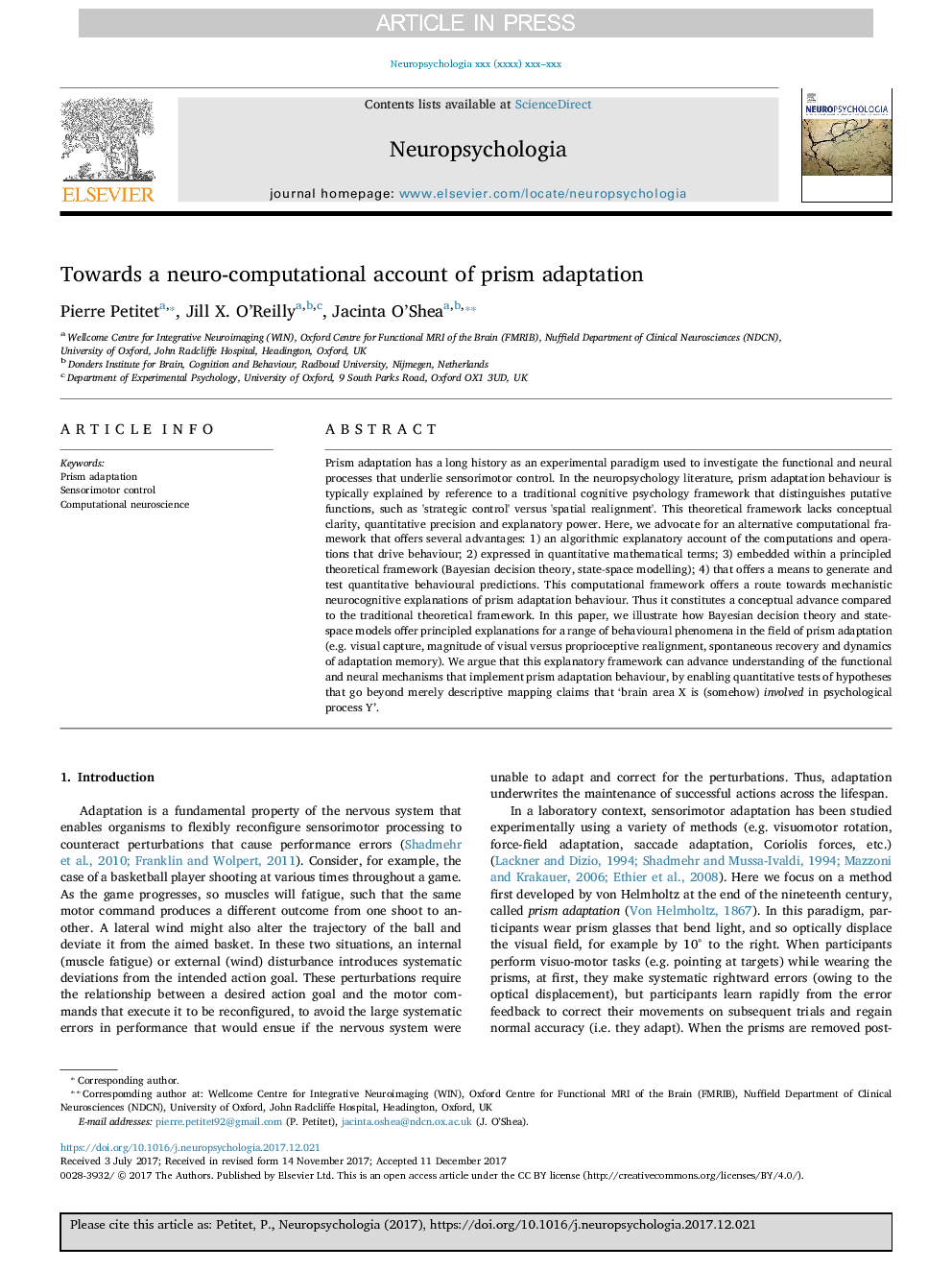ترجمه فارسی عنوان مقاله
به سوی یک حساب محاسباتی عصبی از انطباق منشور
عنوان انگلیسی
Towards a neuro-computational account of prism adaptation
| کد مقاله | سال انتشار | تعداد صفحات مقاله انگلیسی |
|---|---|---|
| 150894 | 2017 | 16 صفحه PDF |
منبع

Publisher : Elsevier - Science Direct (الزویر - ساینس دایرکت)
Journal : Neuropsychologia, Available online 14 December 2017
ترجمه کلمات کلیدی
انطباق پذیری، کنترل سنسورموتور، علوم اعصاب محاسباتی،
کلمات کلیدی انگلیسی
Prism adaptation; Sensorimotor control; Computational neuroscience;

